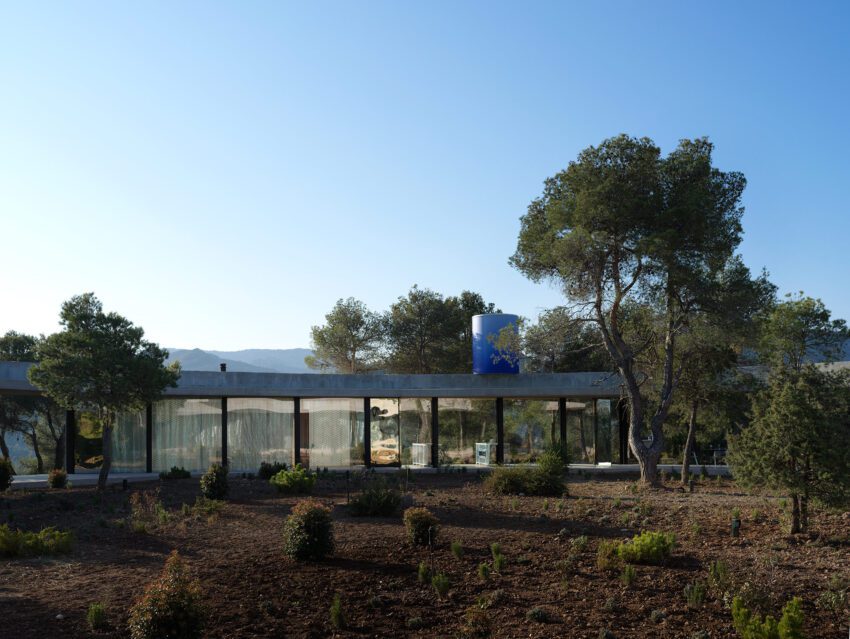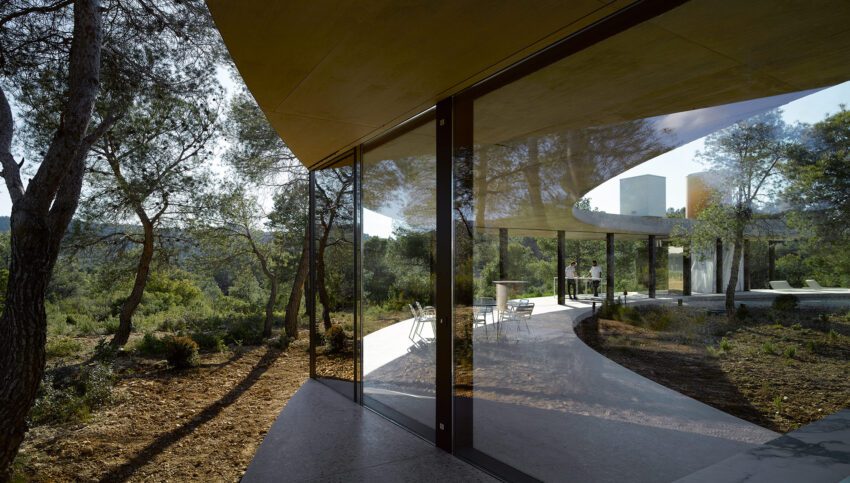Solo House, designed by the Belgian architecture firm OFFICE Kersten Geers David Van Severen, represents a remarkable dialogue between architecture and nature. This unique holiday home is one of twelve commissioned by different architectural firms and situated in the secluded hills of Matarraña, south of Barcelona. Completed between 2012 and 2017, the structure offers a stunning off-the-grid retreat that is not only self-sufficient but also elegantly poised on the edge of a plateau overlooking the sweeping landscape.
Solo House Technical Information
- Architects1: OFFICE Kersten Geers David Van Severen
- Location: Matarraña, Spain
- Topics: Glass Houses, Circle Series
- Area: 750 m2
- Project Year: 2012 – 2017
- Photographs: © Bas Princen
The floor and the roof – two 4.5m wide ring concrete slabs with an inner diameter of 40m – define the house as an enlarged perimeter. The roof is supported by four steel frames of nine columns. Positioned as chords of the circle, they collectively describe a square.
– OFFICE Kersten Geers David Van Severen Architects
Solo House Photographs
Blending Form, Function, and Nature in Solo House
The design revolves around two 4.5m wide concrete slabs, forming the floor and the roof, that embrace a circular plan with an inner diameter of 40m. This “enlarged perimeter” is supported by four steel frames, each consisting of nine columns that describe a square within the circle.
By doing so, the architects create a continuous dialogue between the inside and the outside, setting up an engaging frame that captures vistas of the natural surroundings. The home becomes a circular lens through which the landscape can be viewed, appreciated, and experienced.
Three of the four segments created by the steel frames are enclosed with glazing and sliding arcs of curved polycarbonate panels. The panels are covered with stretched aluminum mesh, lending a sense of transparency and lightness. All appliances within these segments are mounted directly onto the steel columns, emphasizing the minimalist design.
The fourth segment is ingeniously designed as a pool house, retaining water within a sloping basin that forms the inner courtyard. This element adds another layer to the symbiosis between architecture and nature, as the water reflects the sky and the surrounding forest, becoming a dynamic component of the house.
On the roof, one finds an array of machinery required for the house’s self-sufficiency, including solar panels and water filtration systems. While these elements might be seen as disruptive to the architectural purity of the structure, they are, in fact, a conscious decision to feature the functional aspects as part of the overall aesthetic.
Solo House offers a captivating architectural experience that masterfully balances form, function, and context. With its understated elegance, the structure perfectly blends into its natural surroundings while providing a sublime off-the-grid retreat. OFFICE Kersten Geers David Van Severen have succeeded in crafting an architectural marvel that is not just visually stunning but also exceptionally self-sufficient, marking an essential milestone in sustainable design.
Solo House Plans
Solo House Image Gallery

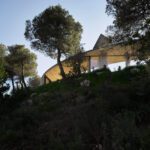
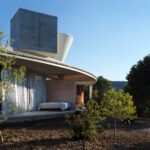


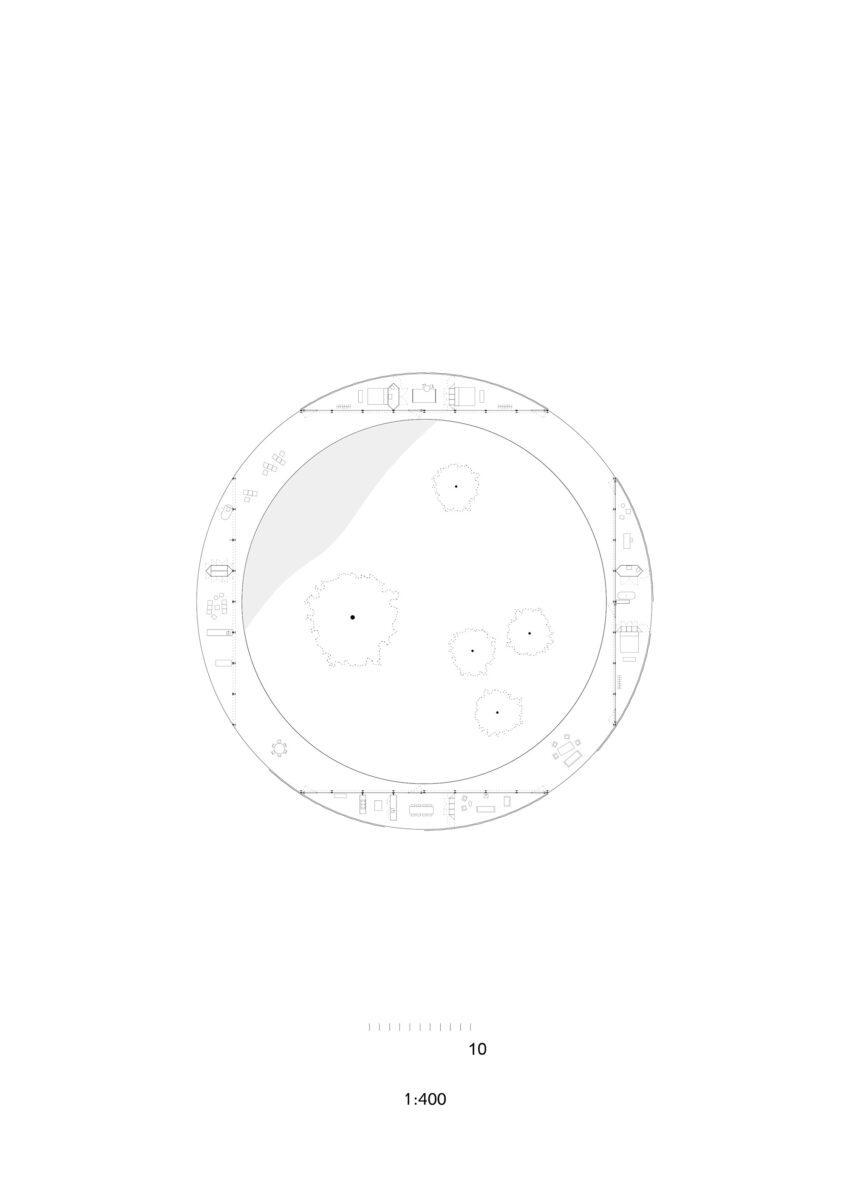

About OFFICE Kersten Geers David Van Severen
OFFICE Kersten Geers David Van Severen is a Brussels-based architectural firm founded in 2002 by Kersten Geers and David Van Severen. Renowned for their minimalist approach and conceptual rigour, the firm engages in projects that range from exhibitions and temporary installations to large-scale urban interventions. They adopt a cross-disciplinary methodology, often incorporating elements from art, literature, and sociology to enrich the spatial and contextual quality of their work. The firm has gained international recognition for its innovative designs, such as the Centre for Traditional Music in Bahrain, and has been the recipient of numerous awards, solidifying their reputation as thought leaders in contemporary architecture.
Notes & Additional Credits
- Collaborators: Christian Bourdais, UTIL Struktuurstudies, Diogo Porto



